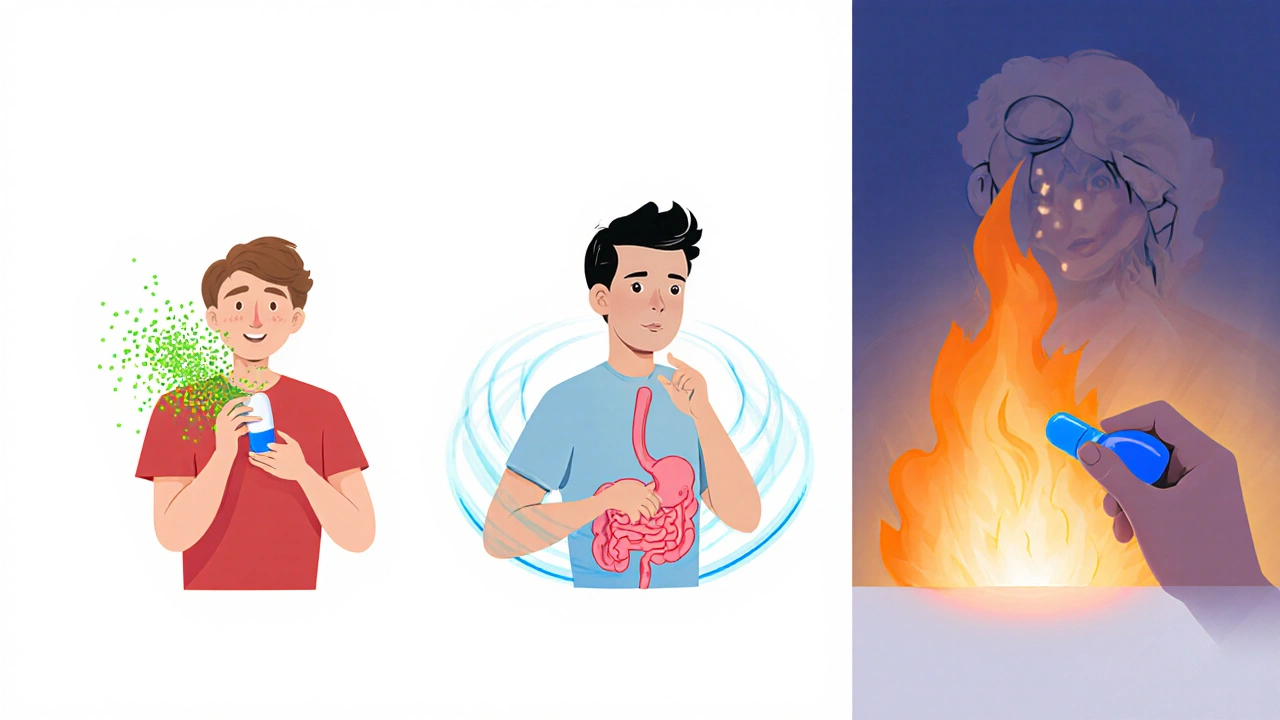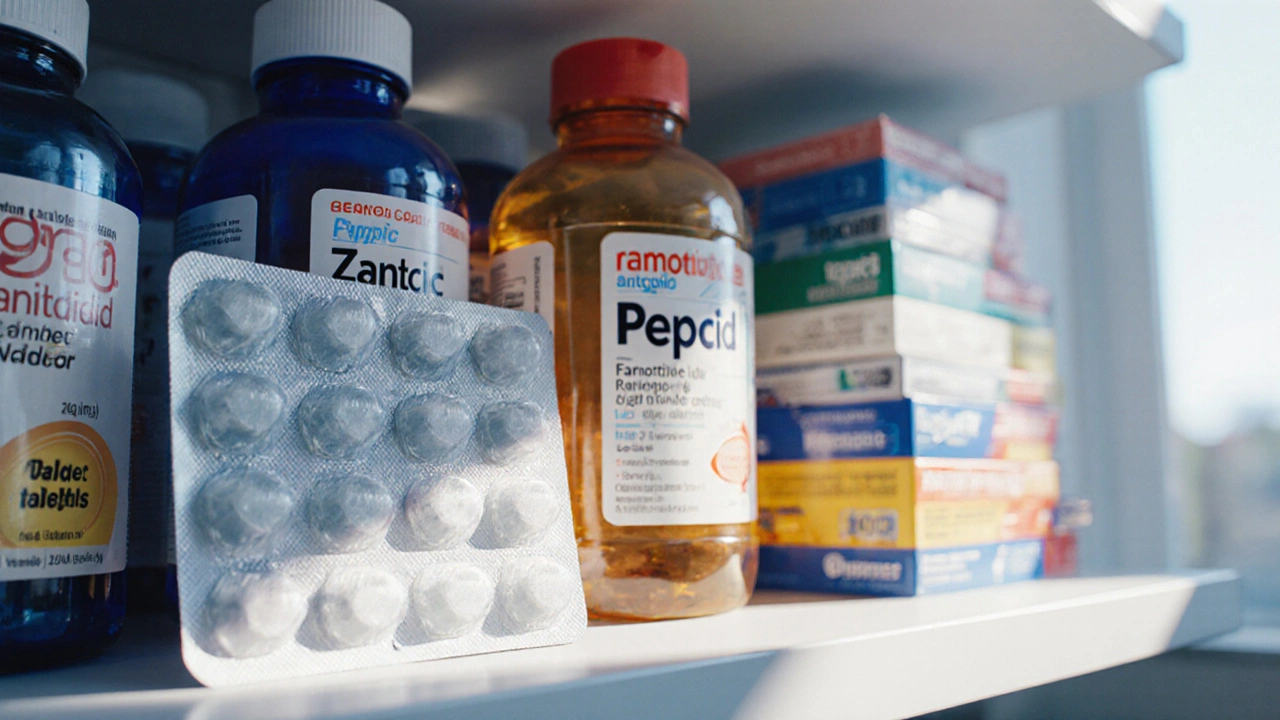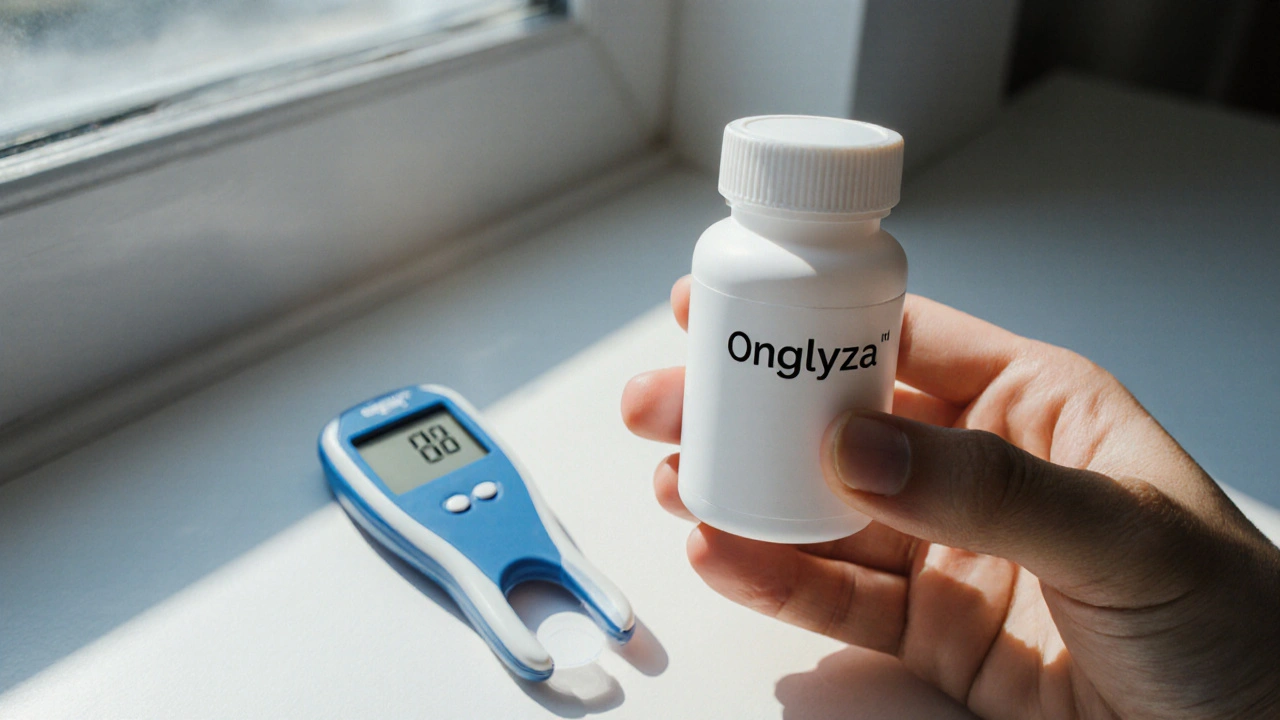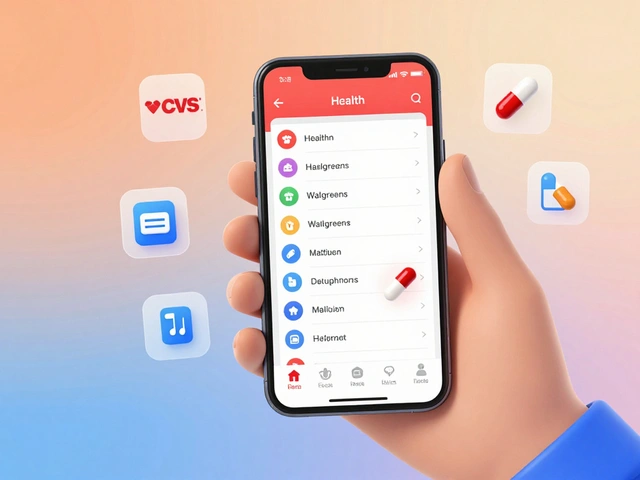Zantac vs. Heartburn Alternatives: Medication Selector
Recommended Heartburn Treatment
Fill in the criteria above and click "Find Best Heartburn Medication" to get personalized recommendations.
| Medication | Effectiveness | Safety Profile | Cost | Relief Speed |
|---|---|---|---|---|
| Zantac (Ranitidine) | Moderate | High risk (NDMA recall) | High | Medium |
| Famotidine (Pepcid) | High | Very Safe | Low | Medium |
| Omeprazole (Prilosec) | Very High | Moderate | Medium | Slow |
| Antacids | Low-Moderate | Safe | Low | Fast |
When it comes to treating heartburn, Zantac is often the name that pops up. But with the ranitidine recall and new drugs on the shelf, many wonder how it really stacks up against the options you can buy today. This guide breaks down the science, safety and cost of Zantac and its top competitors so you can pick the right relief for your stomach.
Quick Takeaways
- Zantac (ranitidine) was a leading H2 blocker until a 2023 FDA recall due to NDMA impurities.
- Famotidine (Pepcid) offers similar acid suppression without the recall concerns.
- Proton‑pump inhibitors (PPIs) like omeprazole and esomeprazole work harder and longer but have different side‑effect profiles.
- Antacids (e.g., Tums) give rapid, short‑term relief but don’t treat underlying reflux.
- Choosing the right medication depends on symptom severity, health conditions and how quickly you need relief.
What Is Zantac (Ranitidine)?
Zantac is a prescription and over‑the‑counter medication that belongs to the class of H2 receptor antagonists. It reduces stomach acid by blocking histamine‑2 receptors on parietal cells, which lowers the amount of gastric acid secreted after meals.
Key attributes of ranitidine include:
- Typical dose: 150mg twice daily for heartburn, up to 300mg twice daily for ulcer prevention.
- Onset of action: about 1hour.
- Duration: 8-12hours, making it a twice‑daily regimen for most users.
Why Was Zantac Pulled from Shelves?
In 2023 the FDA issued a safety alert after detecting N‑nitrosodimethylamine (NDMA), a probable human carcinogen, in several ranitidine batches. The agency’s risk assessment estimated a daily intake of NDMA from contaminated Zantac could exceed the acceptable limit of 0.032ppm.
Manufacturers voluntarily recalled the product, and many pharmacies stopped dispensing it altogether. The recall sparked a surge in demand for alternatives that offer the same H2‑blocking effect without the NDMA risk.
Major Alternatives at a Glance
Below are the most common heart‑burn remedies you’ll encounter in 2025.
- Famotidine (brand: Pepcid) - another H2 blocker with a lower propensity for NDMA formation.
- Cimetidine (brand: Tagamet) - older H2 blocker, effective but can interact with several drugs.
- Omeprazole (brand: Prilosec) - a proton‑pump inhibitor (PPI) that blocks the final step of acid production.
- Esomeprazole (brand: Nexium) - a PPI with slightly higher bioavailability than omeprazole.
- Antacids (e.g., calcium carbonate tablets like Tums) - neutralize existing stomach acid instantly.
How the Alternatives Work
Famotidine works the same way as ranitidine, blocking H2 receptors, but it is chemically more stable and less likely to form NDMA. Typical doses range from 20mg once daily for mild symptoms to 40mg twice daily for ulcer prophylaxis.
Cimetidine also blocks H2 receptors but has a broader interaction profile because it inhibits CYP450 enzymes. It’s useful for patients who can’t tolerate famotidine, though clinicians often prefer the newer H2 blocker.
Omeprazole and Esomeprazole belong to the Proton pump inhibitors. They permanently inactivate the H+/K+ ATPase pump in parietal cells, providing up to 24‑hour acid suppression. This makes them the go‑to choice for severe gastroesophageal reflux disease (GERD) and erosive esophagitis.
Antacids such as calcium carbonate, magnesium hydroxide, or aluminum hydroxide provide immediate neutralization of gastric acid. They are ideal for occasional, mild heartburn but don’t prevent future episodes.

Side‑Effect Snapshot
| Medication | Common Side Effects | Serious Risks | Typical Use Duration |
|---|---|---|---|
| Zantac (Ranitidine) | Headache, dizziness | NDMA contamination (recall) | Short‑term or maintenance (up to 12months) |
| Famotidine | Headache, constipation | Rare renal impairment | Short‑term or maintenance (indefinite) |
| Cimetidine | Fatigue, mild diarrhea | Drug interactions via CYP450 | Short‑term (weeks) for ulcer prevention |
| Omeprazole | Upper‑abdominal pain, nausea | Bone fracture risk (long‑term), C. difficile infection | 2‑8weeks for GERD; longer under doctor supervision |
| Esomeprazole | Headache, flatulence | Similar to omeprazole - nutrient malabsorption | 4‑8weeks; chronic use only if needed |
| Antacids | Gas, constipation (calcium), diarrhea (magnesium) | Rebound acid hypersecretion if overused | As‑needed, occasional |
Decision Criteria: Which Option Fits Your Situation?
Think of choosing a heartburn medication like picking a tool for a specific job. Ask yourself these questions:
- How severe are your symptoms? Mild, occasional heartburn often responds to antacids. Moderate, frequent symptoms are better managed by H2 blockers like famotidine. Severe or erosive esophagitis usually requires a PPI.
- Do you need fast relief? Antacids work in minutes, H2 blockers in about an hour, PPIs take 1-3days to reach full effect.
- Any kidney or liver concerns? Famotidine is cleared renally; dose‑adjust for impaired kidneys. Cimetidine is liver‑metabolized and can affect many drugs.
- Are you on other prescription meds? Check for CYP450 interactions with cimetidine. PPIs can affect the absorption of certain antivirals and antifungals.
- Long‑term safety? PPIs have been linked to bone density loss and gut microbiome changes when used >1year. H2 blockers are generally safer for extended use.
Based on this checklist, most healthy adults with mild‑to‑moderate reflux find famotidine the sweet spot: effective, well‑tolerated, and free of the NDMA scare that plagued ranitidine.
Cost and Accessibility in 2025
Pricing can tip the balance, especially for uninsured patients. Here’s a rough 2025 snapshot (US market):
- Famotidine (generic) - $8‑$12 for a 30‑day supply.
- Cimetidine (generic) - $6‑$10 for 30 days.
- Omeprazole (generic) - $12‑$18 for 30 days.
- Esomeprazole (brand) - $30‑$45 for 30 days (generic versions dropping to $15‑$20).
- Antacids - $5‑$8 for a bottle of 100 chewables.
- Zantac - discontinued in most U.S. pharmacies; if found, expect premium pricing ($25‑$30) due to limited supply.
Insurance plans usually cover generic H2 blockers and PPIs at a co‑pay level, but antacids remain fully out‑of‑pocket. If you’re on a tight budget, famotidine or cimetidine are the most affordable options.
How to Switch Safely
If you were on Zantac before the recall, follow these steps to transition without rebound acid:
- Consult your healthcare provider - let them know about the recall and any existing conditions.
- Choose a replacement based on severity (famotidine for most, a PPI for severe GERD).
- Start the new medication at the recommended dose; do not double‑dose during the switch.
- Monitor symptoms for 1-2 weeks. If heartburn persists, your doctor may adjust the dose or add an antacid for breakthrough relief.
- Schedule a follow‑up visit to assess long‑term management, especially if you need a PPI for more than 8weeks.
Never self‑prescribe a PPI for months without professional guidance; long‑term use can mask underlying issues like stomach ulcers or infections.
Frequently Asked Questions
Is famotidine a safe replacement for Zantac?
Yes. Famotidine provides comparable H2‑blocking effects without the NDMA contamination that caused the ranitidine recall. It’s available over‑the‑counter in 20mg and 40mg tablets and has a well‑established safety profile.
Can I use antacids together with a PPI?
Yes, but only for short‑term breakthrough heartburn. Taking antacids on top of a PPI can give immediate relief while the PPI builds its longer‑acting effect. Avoid using antacids for more than a few days without medical advice.
What are the risks of long‑term PPI use?
Extended PPI therapy (over 12 months) has been linked to reduced calcium and magnesium absorption, increased risk of bone fractures, vitamin B12 deficiency, and a higher chance of Clostridioides difficile infection. Doctors usually recommend the lowest effective dose and periodic reassessment.
Does cimetidine interact with other drugs?
Cimetidine can inhibit several CYP450 enzymes, potentially raising levels of drugs such as warfarin, theophylline, and certain antiretrovirals. Always inform your pharmacist or doctor if you’re on multiple prescriptions.
Why was Zantac specifically targeted for recall?
Testing revealed that ranitidine can degrade into NDMA, especially when stored at higher temperatures. The impurity levels in some batches exceeded the FDA’s acceptable daily intake, prompting a nationwide recall.
Bottom Line
If you’re looking for a direct, low‑risk substitute for Zantac, start with famotidine. For severe, chronic reflux, a short course of a proton‑pump inhibitor like omeprazole or esomeprazole is more effective, but keep the treatment window limited. Antacids are fine for occasional flare‑ups, while cimetidine serves as a backup if you can’t tolerate famotidine.
Always involve a healthcare professional when switching meds, especially if you have kidney disease, liver issues, or take other prescription drugs. With the right choice, you can keep heartburn under control without the safety worries that haunted ranitidine.






Suresh Pothuri on 1 October 2025, AT 16:14 PM
First, let me set the record straight: the ranitidine (Zantac) scandal is not a marginal blip, it is a textbook case of industrial negligence that could have been avoided with proper quality control. The FDA's NDMA findings demonstrate a failure to adhere to the Good Manufacturing Practices that any reputable pharmaceutical company should follow. In India, we have the capacity to produce safe H2‑blockers, yet the recall shows how cutting‑corners abroad can jeopardize global health. Consumers deserve transparent labeling-no more vague warnings about "possible contaminants". If you’re still reaching for Zantac, you’re essentially gambling with a probable carcinogen. Switch to a well‑vetted alternative like famotidine, which has a clean safety profile and no NDMA risk. Moreover, the cost differential is negligible when you consider the potential medical expenses from long‑term exposure. Think critically, read the fine print, and demand accountability from manufacturers. The market will reward those who prioritize patient safety over profit.